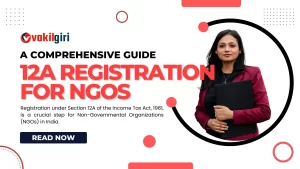What is Microfinance Company?
Micro finance companies are financial businesses that specialise in providing small-scale financial services such as loans, credit, and savings. These companies are introduced to facilitate the credit system for small firms because of the complex process they don’t get a loan from banks. As a result, it’s sometimes referred to as a Micro-credit, Micro-benefit organisation. They provide small loans to a variety of small enterprises and people that lack access to formal banking channels or loan eligibility. They offer minor loans of less than Rs.50,000 in rural areas and Rs.1,25,000 in metropolitan areas.
The simplest approach to set up a microfinance company in India is to register as a Section-8 company with the Ministry of Corporate Affairs (MCA). Without levying any additional fees or ensuring security. It has the ability to provide loans at low-interest rates as specified by the RBI and the central government. They are a major contributor to all aspects of rural and agricultural development, including revenue and job generation. Micro Finance (Section 8) company can be established with microfinance objects for social purposes to assist poor people in reducing poverty. Under RBI’s master circular, such businesses are excused from obtaining a licence.
Features of Microfinance Company:
- There is no need for RBI approval.
- There is no requirement for a minimum capital of Rs. 5 crores.
- Minimum Requirements
- Can provide a Rs.50,000 unsecured loan to a small business.
- Can provide a loan for a primary residence of up to Rs.1.25 lakh.
- Section-8 companies must adhere to the RBI’s interest rate and processing charge guidelines.
- It is a legal finance company, and you can sue the defaulter if the loan amount is not paid back.
To give Microfinance companies the legitimacy and impetus they need, the Government of India and the Reserve Bank of India have constructed a favourable policy framework. The Reserve Bank of India exempted all Section 8 companies engaging in microfinance activities in its master circular RBI/2015-16/15 DNBR (PD) CC.No.052/03.10.119/2015-16 dated July 1, 2015.
Legal experience is required for the registration of microfinance company. It is a completely online procedure that began with two natural persons. The Ministry of Corporate Affairs (MCA) has given the Registrar of Companies (ROC) the authority to issue section 8 microfinance company licences, which is expected to take 7 days.
Advantages of Section 8 Microfinance Company:
The following are some of the advantages of Section 8 microfinance company registration.
- Make funding available.
- Self-sufficiency and entrepreneurship are encouraged.
- Compared to standard banking products, it has a higher overall loan repayment rate.
- For a few days, strengthen your financial status till things improve.
- Emergency loans, consumer loans, business loans, working capital loans, housing, and other types of credit assistance are available to this population.
Loan Limits by Section 8 Microfinance Company
- Borrowers having an annual household income of not more than Rs. 1,00,000 in rural areas or Rs. 1,60,000 in urban and semi-urban areas will be eligible.
- In the first cycle, the loan amount will not exceed Rs. 60,000, and in following cycles, it will not exceed Rs. 1,00,000.
- The borrower’s total debt will not exceed Rs. 1,00,000.
- For loans in excess of Rs. 30,000, the loan term must be at least 24 months, with no penalty for early repayment.
- The loan will be extended without the need for collateral.
- The total amount of loans issued for income creation is at least 50% of the total amount of loans given by the company.
- The borrower has the option of repaying the loan in weekly, fortnightly, or monthly payments.
Conditions for Microfinance Company Registration
- Registration: In accordance with the Companies Act of 2013.
- License: Section 8 Company licence to be be applied to MCA.
- Directors: A minimum of two directors must be present for a private limited company and three directors must be present for a public limited company. The maximum number of Directors is 15. More Directors can be appointed following the adoption of a special resolution at a general meeting.
- Indian Resident: At least one Director must be a resident of India (ROI), that is, have spent at least 182 days in India in the previous calendar year [(Section 149(3)].
- Subscribers to MoA: If the business is proposed to be formed as a private or public company, its MoA must have at least two or three subscribers, respectively.
- MOA & AOA: The objective of the Company, the name to be applied for, the planned registered office address, the number of Directors and promoters, the authorised capital, and the number of shares to be subscribed by each promoter are all outlined in the Memorandum of Association and Articles of Association. They must include a plan for achieving your social objectives. The ROC has the right to inquire about it.
- Initial Capital: If the Company has proposed initial capital, it must be invested in the Company’s bank account within two months.
- Property Management: The property is owned by the Company and can only be sold in accordance with the relevant rules outlined in the Companies Act.
- Annual Compliance: The filing of the company’s accounts, statements, and returns with the ROC is a requirement that must be met.
- Documents: Each Director must have a valid DIN and DSC.
Must Read: What is the difference between Section 8 Microfinance Company & NBFC?
Latest Master Directions Regulatory framework for Microfinance Loans, 2022





